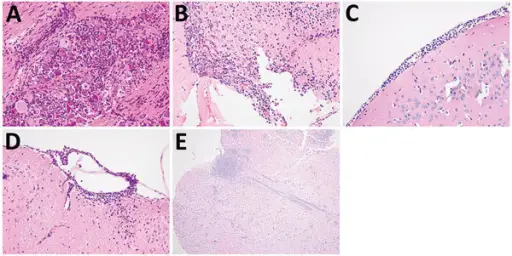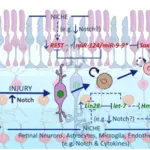Central nervous system pathology comprises of all the neurological disorders that affect the structure or function of the brain or spinal cord, which together make up the central nervous system (CNS). Each disease has its own set of signs and symptoms. Findings associated with central nervous system pathology includes the inability to concentrate, loss of memory, decreased strength, diminished sensations, tremors, seizures, spasticity, paralysis and slurred speech.
WHAT IS CENTRAL NERVOUS SYSTEM PATHOLOGY?

Inflammatory infiltrates were prominent in trigeminal nerve branches and ganglion (original magnification ×400) (A) and in the olfactory bulb (original magnification ×200) (B). Cranial meningitis (C) and spinal (D) meningitis were observed, often with involvement of underlying parenchyma (original magnification ×400). Microabscesses were frequently observed in cerebral cortex (original magnification ×100) (E), brainstem (not shown) and cerebellum (not shown) of mice that had neurologic symptoms and succumbed to infection. Increased Neurotropic Threat from Burkholderia pseudomallei Strains with a B. mallei – like Variation in the bimA Motility Gene, Australia: Emerging Infectious Diseases. Not altered. CC.


